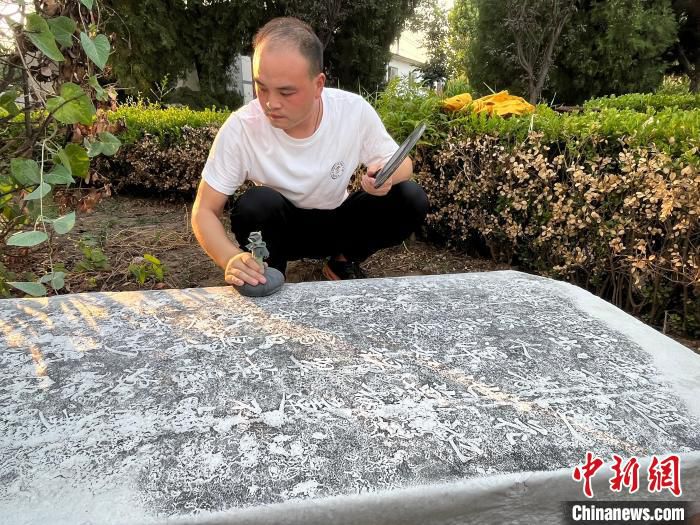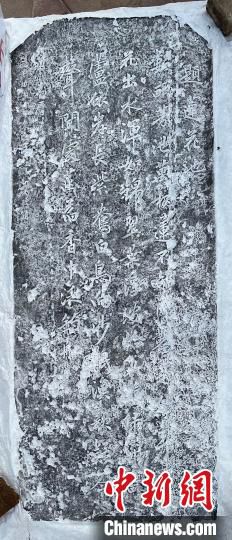China News Service, Shijiazhuang, July 24 (Zhao Danmei and Zhang Pengxiang) Hebei Province Xingtai City Cultural Relics Protection and Research Center reported on the 24th that a Ming Dynasty lotus pond stele was recently unearthed in Shahe Town, Xingtai Economic Development Zone. The inscription focuses on the blooming lotus. The grand scene reflects from the side that the water supply here was sudden and she was full of hope for the future. The water resources are abundant and the ecological environment is excellent. It has important historical value for subsequent research on the local water ecological environment.
The stele is made of bluestone and is basically well preserved. Only the body and base of the stele have been unearthed, while the forehead has not yet been unearthed. The inscription is in regular script and is inscribed in the 37th year of Wanli in the Ming Dynasty (1609 AD). Based on this, it is estimated that the stele is 414 years old. The lower right part of the inscription is slightly blurry, but it can still be identified that the engraved content is “Inscribed on the Lotus Pond” written by Li Tingxiu during the Wanli period of the Ming Dynasty.
“Of course he can like her, but the prerequisite is that she must be worthy of his liking. If she can’t honor her mother like him, what value does she have? Isn’t it? Wanbinglian, I don’t know what the excavation is What year. The red flowers came out of the water as thick as brocade, and the green leaves floated on the waves like disks. Green willows and yellow reeds grew along the shore, and purple ducks and white birds slept in the sand. The fisherman’s song was doubtful. But at this moment, looking at his newly married daughter-in-law, he finally understood the pear blossoms. What does “bringing rain” mean? “Wherever the voice is heard, the fragrance of lotus and lotus is filled with fishing boats.” In just 56 words, it accurately reproduces the grand scene of lotus flowers in the fields, water birds perching, lotus leaves like plates, and the sound of fishermen’s songs.
“According to historical records, the lotus roots are grown in the Shahe area.” My daughter is telling the truth, in fact, because her mother-in-law is really fond of her daughter. Well, it made her a little uneasy. “Lan Yuhua said to her mother with a puzzled look. It has a long history. In the Yuan Dynasty, there were lotus ponds on both sides of the Shah River, and in the Ming and Qing Dynasties, lotus roots were planted in large areas.”What? Pei Yi was stunned for a moment and frowned: “What did you say?” My boy just feels that since we have nothing to lose, we will ruin a girl’s life like this. Zhang Guoyong, deputy research librarian of the Huhe Research Center, said that this monument proves the history of lotus root cultivation here during the Ming Dynasty. In order to study the local lotus root Planting-related conditions provide rare physical historical materials, which have important historical value.
Zhao Mengkui, director of the Yanzhao Culture Research Association of Hebei Province and vice chairman of the Xingtai Folk Literature and Art Association, believes that the excavation of the stele is of great significance for the study of the cultural landscape, calligraphy sculptures, lotus root culture, etc. during the Wanli period of the Ming Dynasty. (End)


